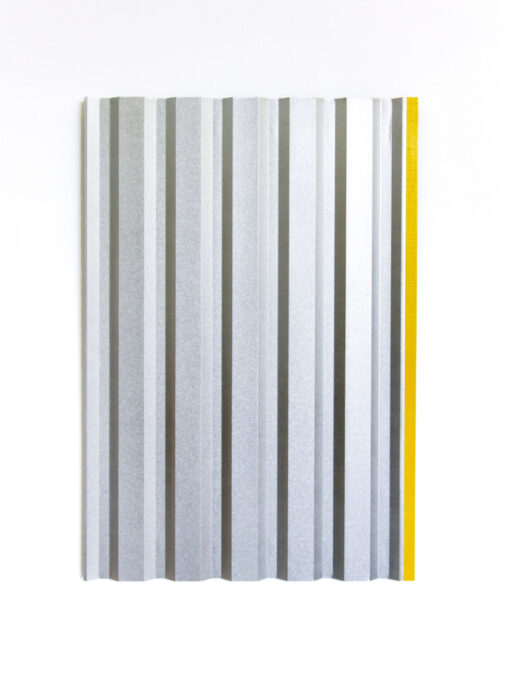The two-part group show “nearly instant, nearly raw” examines the aesthetics of sculptural objects, spatial installations, artistic apparatuses, and performative actions that are constructed with recognizable recourse to commercially available hardware store supplies, the simplest components, repurposed low tech, and in the reductionist methodology of bricolage. Prefabricated, cheap to rugged materials and modes of construction remain superficially intact; their properties, material as well as aesthetic qualities are questioned.
Taking painting as his point of departure, Sebastian Dannenberg combines color surfaces and lines in space with constellations of commercially available, often only partially processed components and materials such as wood, neon tubes, or trapezoidal sheet metal to create installative settings that are minimalist in terms of color and form.
Hendrik Lörper conceives kinetic objects, experimental arrangements, and artistic machines with recourse to simple building materials and converted technical components such as PC fans and timers. With exposed constructions reduced to the indispensable, he tests irregularities of processual sequences and their entropic effects on fragile membranes that are set in motion, tension or vibration.
Jáno Möckel pursues a conceptual approach, for which disparate articles of the found range of goods are not even moved away from the DIY store, but are arranged into temporary sculptures in quick interventions still on site. Aisles and niches of the hardware store are transformed into an interim gallery, regular hardware store customers into unsuspecting exhibition visitors. The commodity aesthetics of the products, which are only borrowed for a moment – in their original packaging and with price labels recognizable as assortment articles – remain intentionally conspicuous. Only for the brief moment of an artistic rearrangement are they staged as a work of art, beyond the mere promise of their utility value, only to be returned again, almost imperceptibly, to the economic cycle.
The exhibition is funded by
Stiftung Kunstfonds
NEUSTART KULTUR-Programm
Ministerium für Bildung, Wissenschaft und Kunst, Mecklenburg-Vorpommern.


The two-part group show “nearly instant, nearly raw” examines the aesthetics of sculptural objects, spatial installations, artistic apparatuses, and performative actions that are constructed with recognizable recourse to commercially available hardware store supplies, the simplest components, repurposed low tech, and in the reductionist methodology of bricolage. Prefabricated, cheap to rugged materials and modes of construction remain superficially intact; their properties, material as well as aesthetic qualities are questioned.
Taking painting as his point of departure, Sebastian Dannenberg combines color surfaces and lines in space with constellations of commercially available, often only partially processed components and materials such as wood, neon tubes, or trapezoidal sheet metal to create installative settings that are minimalist in terms of color and form.
Hendrik Lörper conceives kinetic objects, experimental arrangements, and artistic machines with recourse to simple building materials and converted technical components such as PC fans and timers. With exposed constructions reduced to the indispensable, he tests irregularities of processual sequences and their entropic effects on fragile membranes that are set in motion, tension or vibration.
Jáno Möckel pursues a conceptual approach, for which disparate articles of the found range of goods are not even moved away from the DIY store, but are arranged into temporary sculptures in quick interventions still on site. Aisles and niches of the hardware store are transformed into an interim gallery, regular hardware store customers into unsuspecting exhibition visitors. The commodity aesthetics of the products, which are only borrowed for a moment – in their original packaging and with price labels recognizable as assortment articles – remain intentionally conspicuous. Only for the brief moment of an artistic rearrangement are they staged as a work of art, beyond the mere promise of their utility value, only to be returned again, almost imperceptibly, to the economic cycle.
The exhibition is funded by
Stiftung Kunstfonds
NEUSTART KULTUR-Programm
Ministerium für Bildung, Wissenschaft und Kunst, Mecklenburg-Vorpommern.